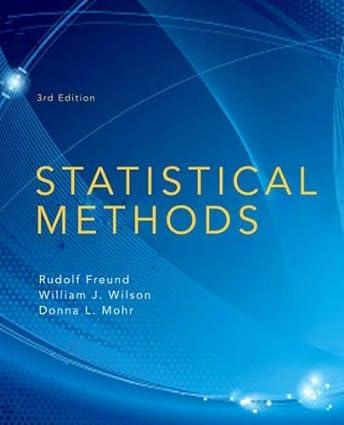In an experiment in which infants interacted with objects, Sommerville, et al. (2005) randomly divided 30 infants
Question:
In an experiment in which infants interacted with objects, Sommerville, et al.
(2005) randomly divided 30 infants into a reach-first versuswatch-first condition.
The authors’ state, Whereas 11 of 15 infants in the reach-first condition looked longer at the new goal events than the new path events, only 4 of 15 infants in the watch-first condition showed this looking time preference.
Is the difference observedbetween the two groups greater than can be attributed to chance if you use α = 0.05? What if you use α = 0.01?
LO.1
Fantastic news! We've Found the answer you've been seeking!
Step by Step Answer:
Related Book For 

Question Posted:





